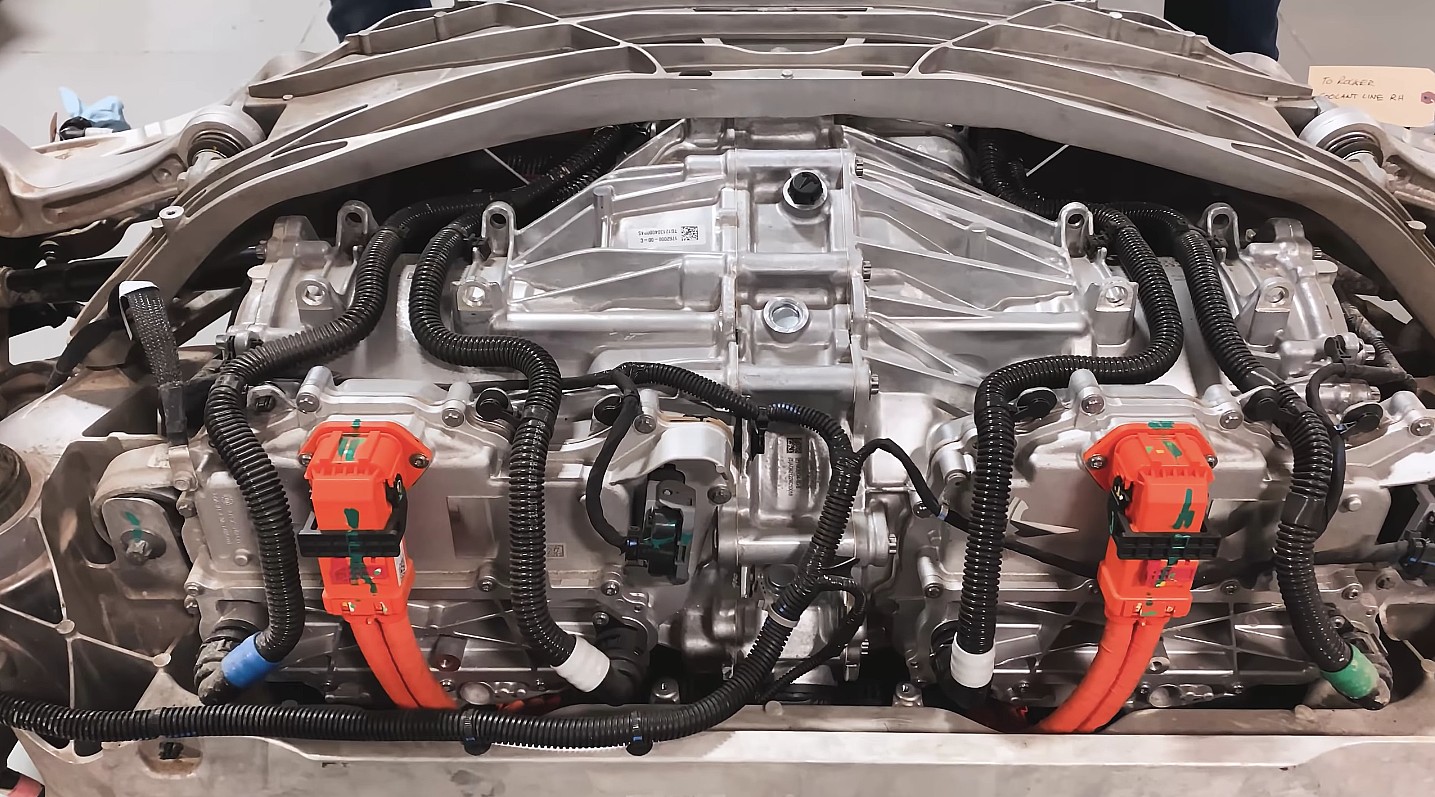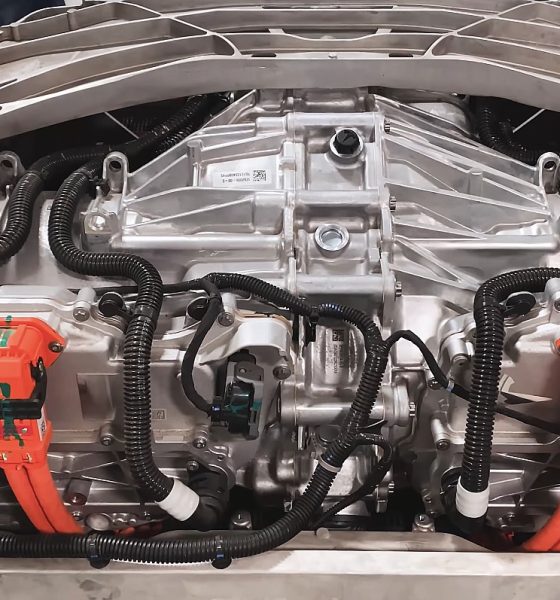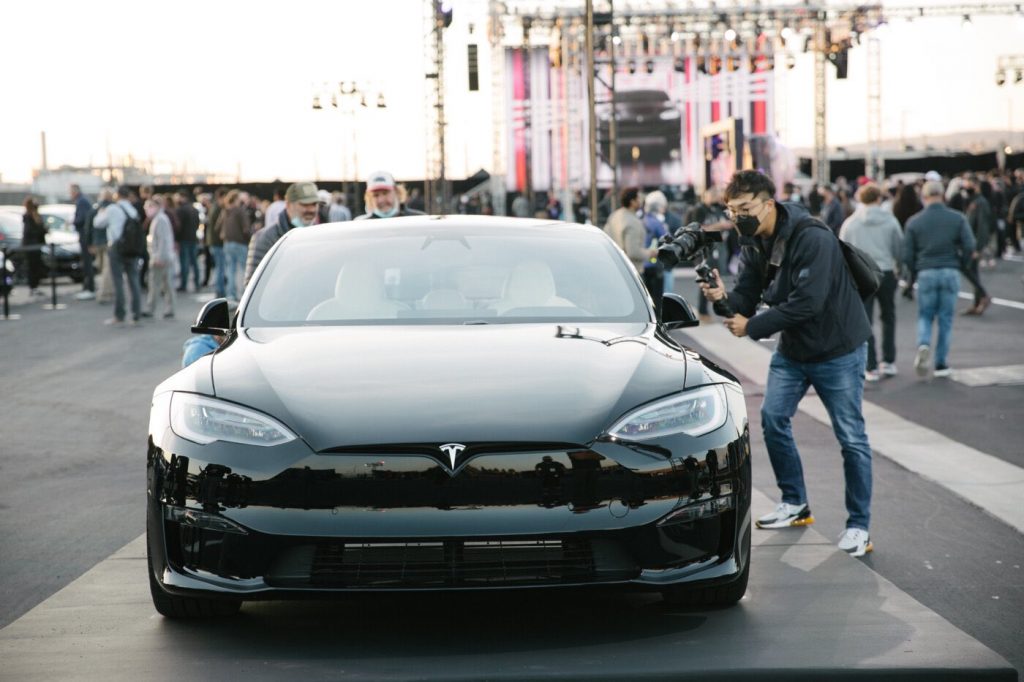

News
Opinion: Tesla Model S Plaid’s ‘packaging symphony’ shows need for a flagship design update
When rumors of the Tesla Model S Plaid started emerging, many were excited to see the company’s new flagship sedan. It takes something special, after all, to dethrone the Model S “Raven” Performance, a vehicle that is already capable of humbling supercars on the quarter-mile. But while the specs of the Plaid definitely did not disappoint, one could not deny that the car’s exterior left much to be desired.
The Tesla Model S Plaid, to put it bluntly, looks very similar to the Model S “Raven” Performance. Save for a slightly wider stance and some updated accents here and there, the car looks nearly identical to its predecessor. This was something that Tesla critics immediately pounced on, and it was something that could have been avoided. The Model S Plaid, after all, is a revolutionary car in its own right. Its ongoing teardown continues to prove it.

A “Packaging Symphony”
Auto veteran Sandy Munro of Munro & Associates is currently in the process of tearing down and analyzing every aspect of the Model S Plaid, and so far, the expert has been impressed with the vehicle. A recent video posted on the Munro Live YouTube channel showcased the Model S Plaid’s rear motor assembly, and as per one of the team’s experts, the vehicle’s rear cradle and electric drive module are nothing short of a “packaging symphony.”
The Munro team’s thoughts on the Model S Plaid were unsurprising, considering that the vehicle is filled to the brim with new innovation. The team even concluded in its rear cradle review that compared to its predecessors, the Model S Plaid is really a new generation vehicle. And in a lot of ways, the car does show it. Its specs are on a completely different level compared to the numbers achieved by the Model S “Raven” Performance, and the Plaid’s interior is fully revamped as well.
Considering that the Model S Plaid is also a completely different car beneath the hood, one could find it unfortunate that Tesla opted to package all this innovation in a body that, while now iconic, is getting a little bit long in the tooth. This is not to say that the Model S’ look is no longer attractive, of course. The Model S is still a beautiful car and its lines are now timeless, but it’s hard to shake the idea that for a vehicle like the Plaid, it would have been better if Tesla implemented just as much updates in the vehicle’s exterior as it did with the car’s interior.
Missed Opportunities
This is especially strange since, in the months leading up to the Model S Plaid’s official release, the internet was abuzz with fan renders of what the updated vehicle could look like. Some were radical, but most were subtle enough that they would not look out of place in Tesla’s lineup. Very few could have predicted the vehicle’s actual design, however, as the Plaid was pretty much identical to the Model S “Raven” Performance.
There is no doubt that the sheer engineering involved in the Model S Plaid’s creation is absolutely insane. Every square inch of the car’s interior and everything behind the hood of the vehicle proves this. It’s just a bit surprising — if not a tad bit disappointing — that Tesla opted to simply maintain the status quo with the vehicle’s exterior, which is something that the company rarely does. Tesla made a name for itself as an automaker that does what it thinks is best, after all, regardless of what the rest of the auto sector thinks. The Cybertruck’s brutalist XY design is an example of that.
Even in a company like Tesla, with a mission as important as those outlined by CEO Elon Musk, it does not hurt to put extra effort in packaging the company’s most formidable vehicles in a body that looks the part. Tesla already did that with the next-generation Roadster, and there is no reason why the company could not do that for its flagship sedan and SUV. The Model S and Model X Plaid would likely be successful in their respective segments — their specs and performance are just that good — but just imagine how much more successful the vehicles could be if their exteriors were redone as much as their interior and tech.
Watch Munro Live‘s teardown of the Model S Plaid’s rear cradle and electric drive module in the video below.
Don’t hesitate to contact us with news tips. Just send a message to simon@teslarati.com to give us a heads up.

News
Tesla FSD fleet is nearing 7 billion total miles, including 2.5 billion city miles
As can be seen on Tesla’s official FSD webpage, vehicles equipped with the system have now navigated over 6.99 billion miles.

Tesla’s Full Self-Driving (Supervised) fleet is closing in on almost 7 billion total miles driven, as per data posted by the company on its official FSD webpage.
These figures hint at the massive scale of data fueling Tesla’s rapid FSD improvements, which have been quite notable as of late.
FSD mileage milestones
As can be seen on Tesla’s official FSD webpage, vehicles equipped with the system have now navigated over 6.99 billion miles. Tesla owner and avid FSD tester Whole Mars Catalog also shared a screenshot indicating that from the nearly 7 billion miles traveled by the FSD fleet, more than 2.5 billion miles were driven inside cities.
City miles are particularly valuable for complex urban scenarios like unprotected turns, pedestrian interactions, and traffic lights. This is also the difference-maker for FSD, as only complex solutions, such as Waymo’s self-driving taxis, operate similarly on inner-city streets. And even then, incidents such as the San Francisco blackouts have proven challenging for sensor-rich vehicles like Waymos.
Tesla’s data edge
Tesla has a number of advantages in the autonomous vehicle sector, one of which is the size of its fleet and the number of vehicles training FSD on real-world roads. Tesla’s nearly 7 billion FSD miles then allow the company to roll out updates that make its vehicles behave like they are being driven by experienced drivers, even if they are operating on their own.
So notable are Tesla’s improvements to FSD that NVIDIA Director of Robotics Jim Fan, after experiencing FSD v14, noted that the system is the first AI that passes what he described as a “Physical Turing Test.”
“Despite knowing exactly how robot learning works, I still find it magical watching the steering wheel turn by itself. First it feels surreal, next it becomes routine. Then, like the smartphone, taking it away actively hurts. This is how humanity gets rewired and glued to god-like technologies,” Fan wrote in a post on X.
News
Tesla starts showing how FSD will change lives in Europe
Local officials tested the system on narrow country roads and were impressed by FSD’s smooth, human-like driving, with some calling the service a game-changer for everyday life in areas that are far from urban centers.

Tesla has launched Europe’s first public shuttle service using Full Self-Driving (Supervised) in the rural Eifelkreis Bitburg-Prüm region of Germany, demonstrating how the technology can restore independence and mobility for people who struggle with limited transport options.
Local officials tested the system on narrow country roads and were impressed by FSD’s smooth, human-like driving, with some calling the service a game-changer for everyday life in areas that are far from urban centers.
Officials see real impact on rural residents
Arzfeld Mayor Johannes Kuhl and District Administrator Andreas Kruppert personally tested the Tesla shuttle service. This allowed them to see just how well FSD navigated winding lanes and rural roads confidently. Kruppert said, “Autonomous driving sounds like science fiction to many, but we simply see here that it works totally well in rural regions too.” Kuhl, for his part, also noted that FSD “feels like a very experienced driver.”
The pilot complements the area’s “Citizen Bus” program, which provides on-demand rides for elderly residents who can no longer drive themselves. Tesla Europe shared a video of a demonstration of the service, highlighting how FSD gives people their freedom back, even in places where public transport is not as prevalent.
What the Ministry for Economic Affairs and Transport says
Rhineland-Palatinate’s Minister Daniela Schmitt supported the project, praising the collaboration that made this “first of its kind in Europe” possible. As per the ministry, the rural rollout for the service shows FSD’s potential beyond major cities, and it delivers tangible benefits like grocery runs, doctor visits, and social connections for isolated residents.
“Reliable and flexible mobility is especially vital in rural areas. With the launch of a shuttle service using self-driving vehicles (FSD supervised) by Tesla in the Eifelkreis Bitburg-Prüm, an innovative pilot project is now getting underway that complements local community bus services. It is the first project of its kind in Europe.
“The result is a real gain for rural mobility: greater accessibility, more flexibility and tangible benefits for everyday life. A strong signal for innovation, cooperation and future-oriented mobility beyond urban centers,” the ministry wrote in a LinkedIn post.
News
Tesla China quietly posts Robotaxi-related job listing
Tesla China is currently seeking a Low Voltage Electrical Engineer to work on circuit board design for the company’s autonomous vehicles.

Tesla has posted a new job listing in Shanghai explicitly tied to its Robotaxi program, fueling speculation that the company is preparing to launch its dedicated autonomous ride-hailing service in China.
As noted in the listing, Tesla China is currently seeking a Low Voltage Electrical Engineer to work on circuit board design for the company’s autonomous vehicles.
Robotaxi-specific role
The listing, which was shared on social media platform X by industry watcher @tslaming, suggested that Tesla China is looking to fill the role urgently. The job listing itself specifically mentions that the person hired for the role will be working on the Low Voltage Hardware team, which would design the circuit boards that would serve as the nervous system of the Robotaxi.
Key tasks for the role, as indicated in the job listing, include collaboration with PCB layout, firmware, mechanical, program management, and validation teams, among other responsibilities. The role is based in Shanghai.
China Robotaxi launch
China represents a massive potential market for robotaxis, with its dense urban centers and supportive policies in select cities. Tesla has limited permission to roll out FSD in the country, though despite this, its vehicles have been hailed as among the best in the market when it comes to autonomous features. So far, at least, it appears that China supports Tesla’s FSD and Robotaxi rollout.
This was hinted at in November, when Tesla brought the Cybercab to the 8th China International Import Expo (CIIE) in Shanghai, marking the first time that the autonomous two-seater was brought to the Asia-Pacific region. The vehicle, despite not having a release date in China, received a significant amount of interest among the event’s attendees.








